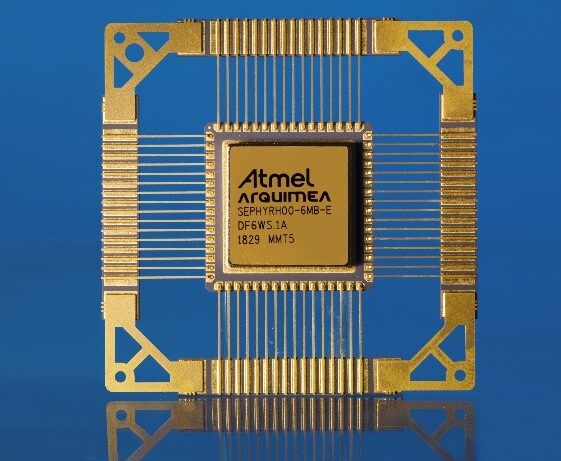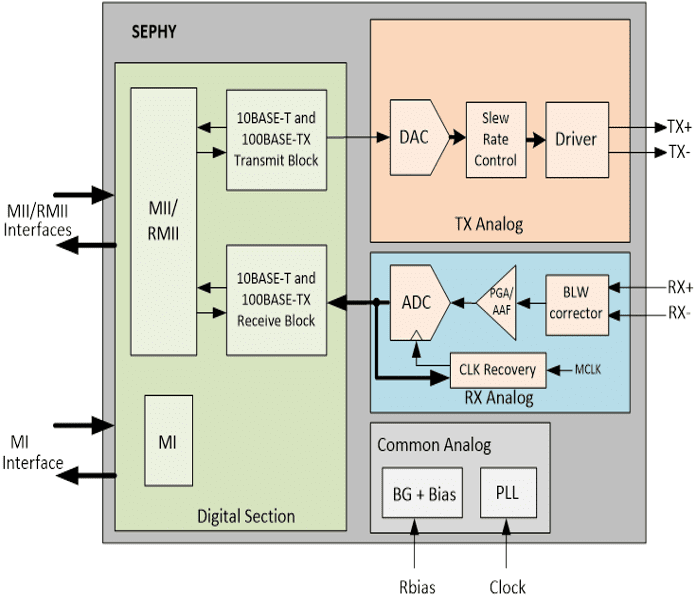- Sectors
- Aerospace & Defense
- Big science
- Biotechnology
- Fintech
- Work at ARQUIMEA
- Insights

Space systems’ growing complexity is creating the need for high-speed reliable networking technologies to interconnect the different spacecraft’s elements. Ethernet, thanks to its wide adoption in terrestrial applications, is being adopted in space and is under normalization to comply with the needs of the different applications, especially those where enhanced service quality, fault-tolerant synchronization and deterministic real-time communications are deemed important.
SEPHY, a space-graded Ethernet transceiver, allows full adoption of the required communication protocols in space applications while maintaining interoperability with the existing technical standards. SEPHY aims to increase the European competitiveness by proposing an ITAR-free, radiation-hardened 10BASE-T/100Base-TX Ethernet PHY (Physical layer) transceiver. It is the first rad-hard Ethernet PHY available in the market and address both space (launchers, satellites, spacecraft) and terrestrial applications where harsh radiation environment or high reliability are a concern.
The project was funded by the European H2020 program, addressing the need of European non-dependence on critical technologies making Europe a pioneer in such critical space electronic components. The project team was formed by ARQUIMEA (acting as coordinator and leading the design activities), IHP Microelectronics (carrying out tasks of digital design), University Antonio de Nebrija (support to design activities) Microchip (supplier of the ATMX150RH microelectronics technology), Thales Alenia Space Spain (electrical characterization and radiation testing) and TTTech, as end user of the chip.
Developing the 10BASE-T/100Base-TX Ethernet PHY transceiver for space required to settle the best strategy concerning the device implementation by adapting the IEEE802.3 commercial standard requirements to the space needs and by focusing on the most important features to reach reliability and improved radiation hardening.
The coordination of a European consortium in such innovative project where no formal guideline is settled for space Ethernet and where each entity has its own way of proceeding and own experience, required important communication efforts, technical background and market analysis, as well as power of persuasion to adopt the best compromises during the implementation.
The development of a complex mixed-signal product like SEPHY based on the IEEE802.3 commercial Ethernet standard, relies not only on its implementation (trade-off between rad-hard design and performances) but also on a good understanding of the application requirements and the related market. The involvement of ESA’s working group on Ethernet standard for space, as well as designers of the higher-level OSI layers like TTTech and end users like Thales Alenia Space enabled the adoption of real objectives and market needs.
DESIGN

The requirements definition relied on the specific competences of each member of the consortium. The main features were compatibility with ANSI X3.263-1995 standard, 100Mbps Integrated clock recovery circuitry requiring no external filters, full-duplex support, programmable loopback modes for easy system diagnostics, MII/RMII MAC communication interface and MI for MAC management and diagnostics.
The development was based on two manufacturing runs, allowing improved analog performances through validation of a test chip with the critical analog blocks. Applying rad-hard mitigation techniques on the analog side allowed complementing the rad-hard features offered by the ATMX150RH SOI CMOS technology and associated library.
IMPLEMENTATION AND VALIDATION
The wafer manufacturing activities were performed by MICROCHIP with the ATMX150RH SOI CMOS technology. The devices were assembled in hermetic ceramic CQFP-64 package. The Electrical and radiation characterization was performed by Thales Alenia Space with a setup embedding a Xilinx FPGA to reproduce a typical operation behavior and emulate the TTEthernet network. The same setup used under heavy-ion radiation allowed measuring the BER under different radiation scenarios.
